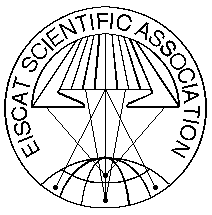
November 28 - December 02, 2011 - Namur, Belgium
Posters session 3A
Advances in GIC research and effects mitigation
| Session: | Posters Session 3A (10) |
| Type: | |
| Date: | Wednesday, November 30, 2011 |
| Time: | 10:30 - 11:15 |
| Chair: | Ellen Clarke & Ari Viljanen |
| Co-chair: | |
| Remarks: |
| Seq | Time | Title | Abs No | ||||
| 1 | 00:00 |
Continental Scale Modelling of geomagnetically induced Currents
Viljanen, Ari1; Pirjola, Risto2; Wik, Magnus3 1Finnish Meteorological Institute, FINLAND; 2Finnish Meteorological Institute (also at Natural Resources Canada), FINLAND; 3NeuroSpace, SWEDEN The basic modelling method of geomagnetically induced currents (GIC) assumes that (1) locations of transformer stations (nodes) and transmission lines as well as all DC resistances are known, and that (2) the geoelectric field is known in the area of the power grid. The resulting GIC are obtained from a matrix equation containing network parameters and voltages due to the electric field. In most studies, the earth's surface has been assumed to be a plane. This is a reasonable approximation in length scales up to about 1000 km, and has thus been applied in previous European country-specific investigations. However, the GIC calculation techniques are equally applicable to spherical geometry with an exactly identical matrix formulation.
The EU/FP7 project EURISGIC (European Risk from Geomagnetically Induced Currents) considers the whole European area. For this purpose, we have extended GIC modelling to a spherical surface. We have also improved the codes to cope with a large number of nodes (>1000) in an extensive power grid. The procedure is as follows: |
|||||
| 2 | 00:00 |
EURISGIC Data Services: eurisgic.org
Katkalov, Yury1; Sakharov, Yaroslav1; Viljanen, Ari2 1Polar Geophysical Institute, RUSSIAN FEDERATION; 2Finnish Meteorological Institute, FINLAND
The eurisgic.org website was developed by Polar Geophysical Institute to provide access to the continuously updated archive of GIC recordings during EURISGIC project. Eurisgic.org is a part of EURISGIC project funded by European Union under European Community's Seventh Framework Programme (FP7/2007-2013). The purpose of eurisgic.org is to provide the information about GIC activity to the public. The public part of services is a near real-time view to the present GIC activity at a number of stations via online plots. The restricted part of services is accessable only to EURISGIC Partarticipants and provides access to the numerical data. The research leading to these results has received funding from the European Community's Seventh Framework Programme (FP7/2007-2013) under grant agreement no 260330 |
|||||
| 3 | 00:00 |
GIC Measurements at the North-West of Russia for EURISGIC Project: Equipment, Data providing & Online Services
Sakharov, Yaroslav1; Katkalov, Yury1; Selivanov, Vasily2; Barannik, Maksim2; Viljanen, Ari3 1Polar Geophysical Institute, RUSSIAN FEDERATION; 2Centre for Physical and Technological Problems of Energy in Northern Areas, RUSSIAN FEDERATION; 3Finnish Meteorological Institute, FINLAND To provide continuosly updating of GIC recordings archive for Work Package 8 of EURISGIC Project we conduct measurements at the North-West of Russian power grid. To measure GIC in the power grid we installed the measurement unit on the ground line of transformer station at five sites at Kola Peninsula and Karelia. The data transmitted from the remote station to the data storage center every hour to provide near-real time GIC records. Online access to Russian GIC records is available through eurisgic.org website as a public part of data services. Finnish archival GIC records and magnetic field derivations from Finnish stations are also available throught website data services. |
|||||
| 4 | 00:00 |
Preparation of European conductivity Model for GIC Calculation
Wesztergom, Viktor; ¡d·m, Antal; Pr·cser, Ernı; Szarka, L·szlÛ; Nov·k, Attila; Lemperger, Istv·n; Kis, ¡rp·d Geodetical and Geophysical Research Institute of Hungarian Academy of Sciences, HUNGARY In the framework of EURISGIC project a European conductivity model is under preparation. To estimate the distribution of GIC over the European plate an appropriate conductivity model of the subsurface is required as well. The characteristic dimensions of the conductivity model is determined based on the power grid nodes and data sources (MT sounding, permanent magnetic stations). A reasonable cell size for 1D resistivity distribution is about 2-4 deg for Europe. This resolution enables us to consider the lateral inhomogeneities (2D, 3D) of regional scale. Cells are filled with the following data: conductance and thickness of the crust (conductive sediment and basement) and depth and resistivity of the astenosphere. Main data sources based on the former publications and reports. |
|||||
| 5 | 00:00 |
Geoelectric Field Measurements at the NCK Observatory - Digitization of historic telluric Recordings from 1957
Wesztergom, Viktor; Nagy , Tam·s; Lemperger, Istv·n; Kis, ¡rp·d; Nov·k, Attila; Szendrıi, Judit Geodetical and Geophysical Research Institute of Hungarian Academy of Sciences, HUNGARY Geomagnetic activity is commonly characterized by geomagnetic range indices but the induction effect (GIC) is related to the temporal variation of the geomagnetic field (curl E = - ÅYB/ÅYt) therefore long recordings of telluric observation may play a significant role in GIC studies especially in analyses long term variation of the induction effect and occurrence of high electric fields. Geoelectric activity observations at the NCK Observatory started in 1957. Based on the analogue recordings the so called T index has been manually determined for more than five solar cycles but the registered telluric signal itself has not been analyzed yet in details. The digitization of historic recordings between 1957 and1994 is performed in the frame of EURISGIC project so as to have some long turn reference of the induced currents. |
|||||
| 6 | 00:00 |
The EURISGIC Database: a Tool for the Advancement of GIC Research
Clarke, Ellen1; Viljanen, Ari2; Wintoft, Peter3; Wesztergom, Viktor4; Thomson, Alan5; Baillie, Orsi5; Reay, Sarah5; Dawson, Ewan5 1British Geological Survey, UNITED KINGDOM; 2FMI, FINLAND; 3IRF, SWEDEN; 4GGRI, HUNGARY; 5BGS, UNITED KINGDOM The goals of the EU/FP7 project EURISGIC (European Risk from Geomagnetically Induced Currents) include the production of the first ever risk map of GIC throughout Europe as well as the first European-wide real-time prototype forecast service of GIC in power systems. The research has been designed to help meet these challenges and will rely on a well organised, easy to access database containing high quality, well defined data from various sources. Four main categories of measurements have been identified as essential components of the database. These are in-situ solar wind observations, ground-based geomagnetic field, electric field and GIC measurements. This poster describes the plans for the EURISGIC database and its current status. The four main data sets are discussed with regard to their importance for the research packages and final products. A final data archive is planned to extend beyond the current project to establish a legacy for future GIC research. |
|||||











